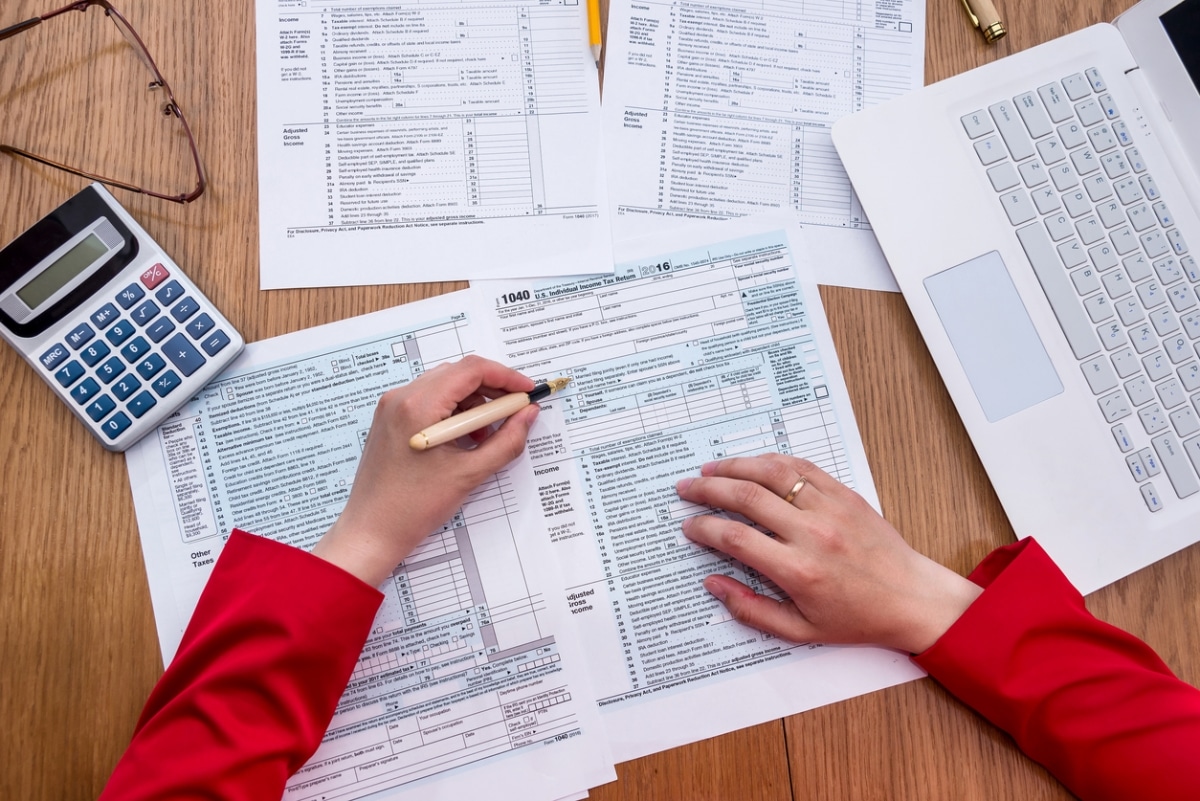The 2025 Tax season is here, bringing the familiar mix of paperwork, deadlines, and potential refunds for some employees, small business owners, and investors.
Whether you file your own taxes or hire a professional tax advisor, getting organized early can simplify the process and reduce unnecessary stress.
This post outlines some things you should keep in mind before the tax filing deadline, including some of the forms, documents, and important considerations you may want to be aware of.
Federal Tax Prep 2025
To help with your tax prep, you should take note of important dates and requirements. To help get you started, here are a few things to consider.
Deadlines and key dates
According to the IRS website, tax season starts in late January, with a standard filing deadline of April 15 each year. If the 15th falls on a weekend or legal holiday, the due date is adjusted to the next business day.
| Date | Significance |
| January 27, 2025 | IRS begins processing 2024 tax returns |
| April 15, 2025 | Federal filing deadline for 2024 taxes |
| October 15, 2025 | Extended filing deadline for those who received an extension |
Tax documents and forms to prepare
While getting ready for tax filing might feel daunting, a good tax prep checklist can help you get everything ready, whether you’re filing yourself or working with an accountant.
Documents to prepare if you’re hiring a tax professional
If you’re hiring a tax professional or small business accountant, the IRS notes that collecting and/or preparing the documents below, as applicable, can help streamline your filing process.
- Last year’s tax return – Shows important carryover items and tax history
- Form 2848 – Gives your accountant legal permission to work with the IRS on your behalf
- Form 8879 – Allows for electronic filing
- ID verification – Bring your government photo ID and Social Security card
- Banking details and routing numbers – For direct deposit of refunds or payments
Income documentation
Organizations that pay you income are required to send income forms and documentation to both you and the IRS.
According to the Social Security Administration (SSA) guidelines, employers, financial institutions, and other payers should send you the following income forms between January and February:
- W-2 Forms: Show wages from employers, taxes withheld, and retirement contributions
- 1099 Forms: Document non-employment income sources, such as:
- 1099-NEC: Freelance or contract work
- 1099-MISC: Prizes, royalties, rent
- 1099-K: Payment processor transactions
- 1099-INT: Interest earned
- 1099-DIV: Investment dividends
- 1099-B: Stock sales
- 1099-R: Retirement distributions
- 1099-G: Unemployment or tax refunds
Deduction documentation
Documenting any valid deductions you have, may lower your taxable income and potentially reduce your tax bill.
There are a variety of different itemized deductions (per IRS’ Schedule A (Form 1040 or 1040-SR)) which, depending on your circumstances, may be available to you, for example:
- Form 1098: Shows mortgage interest paid
- Property Tax Receipts: Records of real estate taxes paid
- Charitable Donation Receipts: Proof of contributions to qualifying organizations
- Medical Expense Records: Documentation of qualifying healthcare costs
- Self-Employment Expense Records: Business-related purchases and expenses
- Education Forms: Tuition payments and student loan interest
Tax credit documentation
Tax credits, if applicable, may directly reduce your tax liability, and new credit opportunities have been created by the Inflation Reduction Act.
You should consider if any of these apply. To access these benefits, proper documentation is essential.
Tax brackets and calculators
The US Federal Tax system is a progressive tax system, meaning your income gets taxed at different rates as it moves through specific ranges.
This system means that the portion of income falling within each bracket gets taxed at that relevant bracket’s rate, not your entire income from $0.
Also, this means you pay gradually higher rates only on the portions of your income that reach higher brackets.
You can review the latest tax rates and brackets on the IRS website. Based on the adjusted version of IRS’ Rev. Proc. 2023-34, single filers follow the tax brackets and rates below:
| Tax Rate | Taxable Income |
| 10% | $0 to $11,600 |
| 12% | $11,601 to $47,150 |
| 22% | $47,151 to $100,525 |
| 24% | $100,526 to $191,950 |
| 32% | $191,951 to $243,725 |
| 35% | $243,726 to $609,350 |
| 37% | $609,351+ |
IRS Planning Tools
Preparing taxes can be complicated. However, the IRS does have two free online calculators to help you plan.
Get Expert Tax Help
Tax filing requires correct timing, documentation, and an understanding of your income type. Need expert help? Book a tax accountant through Airtasker today!
Post your tax preparation task now and receive competitive offers from individuals ready to help you navigate tax season successfully.
Remember – if you are engaging someone to help you with your Taxes, you should always verify that they have the appropriate qualifications.
Use this IRS tool to assist with selecting a specific tax professional with the credentials or qualifications required for your job.










